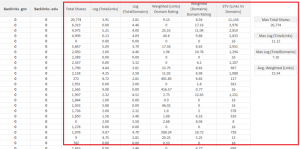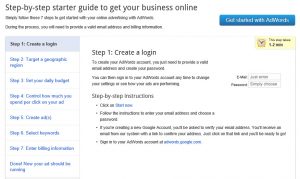— January 2, 2019
When I first became a freelancer, I thought the lifestyle was great. I had control over when I worked, but I also had a ton of projects lined up for the month.
I’d heard horror stories about how freelancing is feast or famine and I finally experienced it firsthand just a few months in. Over the years, I’ve lost some clients unexpectedly or work simply slowed down.
This is a common and scary caveat to freelancing. The fact that your income can differ from a few hundred dollars to thousands each month can make a big difference. If you want to minimize the effects of having a fluctuating income, here are some of the best ways to beat freelance famine months.
Pay Yourself First
It’s easy to think about paying everything and everyone before yourself when your freelance income starts coming through each month. Once you understand how real freelancer feast or famine is, you’ll hopefully start to understand how flawed this logic is.
It’s important to pay yourself first regardless of your profession but it’s even more crucial when you have no guarantee what you’ll be making next month.
When months are super good, pay yourself first and set aside some of the income by adding it to a reserves account. After reading the book Profit First, I resolved to start paying myself a percentage of my income as a profit and storing it away for future use each month.
When the famine months hit, you can rely on your savings as a cash buffer until things pick up again.
Develop a Bare Bones Budget
Do you know how much you’d need to live if you just paid for necessities? If not, develop a bare-bones budget and use it when income months are lower.
A bare-bones budget is super basic, but it will allow you to lay out your most important expenses so you can cover them during even the lowest months.
I created a bare bones budget that allows me to live on significantly less than the amounts listed in my regular budget and that provides me with comfort while relieving stress.
Set Up Pitch Templates
Suddenly losing a client can feel like a huge blog depending on how much income that client provided you with. I know some freelancers who lost several clients all around the same time.
If this ever happens, there’s no use in complaining or feeling sorry for yourself. You need to focus on getting back on your feet and finding a way to replace that lost income.
This is why setting up pitch templates is a handy tactic. It’s always helpful to have a list of clients you’d like to work with (that may be hiring) recorded somewhere along with certain angles to use to pitch them.
You may even want to set up email drafts or templates in Google Docs so you can be ready to pitch for new work when the time comes.
Launch a New Income Stream
Diversity is a must if you’re going to be working in the gig economy. When freelance work slows down, it’s helpful to have an alternative income stream to rely on.
You can still work flexibly and be in control of your own time. You can start a blog and monetize it, coach others by sharing your expertise, sell products, or even develop a passive income stream.
At minimum, you can consider getting established in a new freelance niche. It’s great to have a specialty, but you can likely market yourself to more clients and command higher rates with add-on services if you specialize in more than one niche.
For example, I specialize in personal finance and small business freelance writing. If one niche slows down, I can rely on the other for work.
Summary
Freelance famine months are never fun, but they happen all the time. It’s best to be prepared for a slowdown in work whenever it comes. Use these strategies to ensure you have a continuous flow of income throughout the entire year.
Business & Finance Articles on Business 2 Community
(28)






